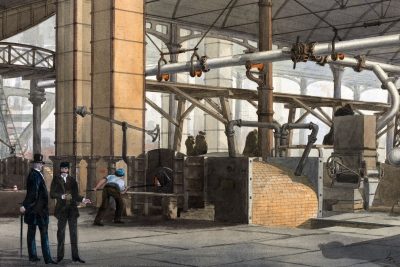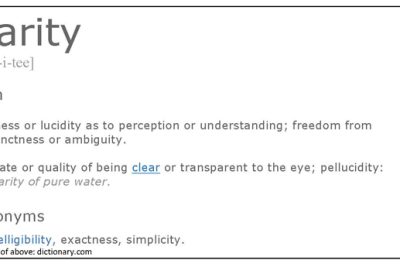
What are the best sewage services for drainage and pollution

Sewage services play a critical role in maintaining the health and hygiene of our communities by managing sewage drainage efficiently. A properly functioning sewage system is vital for the disposal of domestic and industrial waste, ensuring that pollution is minimized and public health risks are mitigated. As urban areas continue to grow, understanding the best sewage services available becomes increasingly important to prevent environmental damage and maintain the quality of local water resources.
The need for effective sewage services cannot be overstated, especially when it comes to tackling issues related to drainage sewage and pollution. With the right solutions in place, municipalities can effectively manage wastewater and stormwater, minimizing overflow and contamination while promoting a sustainable environment. In this article, we will explore various sewage services, delve into the different types of sewage systems, and provide insights into selecting the best service providers.
- Understanding Sewage Services
- Importance of Effective Drainage Solutions
- Overview of Sewage System Types
- Alternative Wastewater Collection Systems
- Choosing the Right Sewage Service Provider
- Environmental Impact of Sewage Systems
- Conclusion: Making Informed Decisions for Drainage and Pollution Solutions
Understanding Sewage Services
Sewage services encompass a wide range of processes and technologies designed to transport, treat, and dispose of wastewater. These services are essential for protecting public health and maintaining the ecosystem. The primary goal of sewage services is to ensure that wastewater, including sewage and stormwater, is handled efficiently to prevent pollution and protect water sources.
The sewage system typically consists of a network of pipes, pumps, and treatment facilities that work in unison to remove waste from homes and businesses. Depending on the locality and specific needs, the sewage services can vary widely in their implementation and effectiveness.
Importance of Effective Drainage Solutions
Effective drainage solutions are crucial to preventing the accumulation of sewage and stormwater at the surface level, which can lead to various public health and environmental issues. Poor drainage can result in flooding, which not only damages property but also creates stagnant water environments that can harbor disease-carrying organisms.
The benefits of efficient sewage drainage services extend beyond immediate environmental concerns. By investing in proper sewage services, municipalities can reduce long-term costs related to flood damage claims, water treatment infrastructure, and public health expenditures. Thus, having a solid sewage infrastructure is a key component of sustainable urban development.
Overview of Sewage System Types
There are generally two primary types of sewage systems: combined and separate systems. Each has its own advantages and challenges that need careful consideration for optimal performance.
Combined Systems: Advantages and Challenges
Combined systems are designed to manage both domestic sewage and stormwater within the same network of pipes. This setup can be beneficial in reducing the complexity of having two separate systems and can be more cost-effective in terms of installation. However, the biggest challenge facing combined systems is the risk of overflow during heavy rain events, which can lead to untreated sewage being discharged into waterways. This presents significant pollution challenges that local governments must address.
To mitigate the overflow issues, many municipalities implement temporary storage solutions, such as holding basins, and may use vortex concentrators to treat stormwater before it is released. These solutions are essential in maintaining a balance between efficiency and environmental responsibility.
Separate Systems: A Focus on Storm and Sanitary Sewers
Separate systems are designed to carry only one type of wastewater; either storm sewage or sanitary sewage. Storm sewers are specifically designed to deal with surface runoff, while sanitary sewers transport wastewater from homes and businesses to treatment plants. This separation allows for more efficient management of each wastewater type, reducing the chances of pollution resulting from combined sewer overflows.
By using separate systems, municipalities can decrease the risk of sewage-related health hazards during heavy rainfall events. However, the initial investment for separate sewage systems may be higher than combined systems, which can deter some urban planners from adopting this approach.
Alternative Wastewater Collection Systems
In areas where traditional sewage systems are impractical, alternative wastewater collection systems provide essential solutions. Some of the prominent alternatives include small-diameter gravity systems, pressure sewers, and vacuum sewers.
Small-Diameter Gravity Systems
Small-diameter gravity systems capitalize on gravity to facilitate the flow of wastewater. They are designed to be installed in areas with minimal slope, making them a great option for low-density populations or locations with challenging terrain. These systems generally require less infrastructure investment compared to traditional systems, making them a popular choice in rural developments.
Pressure Sewers
Pressure sewers utilize pump stations to move sewage through a series of pipelines. This type of system can overcome the challenges posed by terrain and low-lying areas, making it adaptable for various situations. Pressure sewers are particularly useful in areas where gravity sewers cannot be installed effectively.
Vacuum Sewers
Vacuum sewers operate by using a vacuum network to transport sewage from collection points into a central treatment facility. This innovative approach reduces the need for deep excavations and extensive pipe networks, enabling installation in challenging environmental conditions. Vacuum systems are particularly beneficial in seaside communities or regions with high water tables.
Choosing the Right Sewage Service Provider
Selecting the right sewage service provider is crucial for ensuring effective sewage drainage and wastewater management. When searching for a provider, consider factors such as their experience, reputation, adherence to environmental regulations, and customer service capabilities.
Additionally, it's important to assess the range of services offered, from initial consultation and system design to installation and ongoing maintenance. Opting for a provider with a comprehensive portfolio can help guarantee that your sewage needs are met over the long term.
Environmental Impact of Sewage Systems
The environmental impact of sewage services is a significant consideration for municipalities and communities alike. Inefficient sewage management can lead to contamination of drinking water sources, degradation of aquatic ecosystems, and increased health risks for populations.
To mitigate these risks, many localities are adopting green infrastructure practices, such as bioretention systems, constructed wetlands, and permeable pavements, alongside traditional sewage services. These methods aim to enhance natural processes for managing stormwater and treating sewage, ultimately leading to improved environmental outcomes.
Conclusion: Making Informed Decisions for Drainage and Pollution Solutions
In conclusion, understanding the various sewage services available and their impacts on drainage sewage and pollution is essential for making informed decisions. Whether considering combined or separate sewage systems, or exploring alternative wastewater collection methods, it is vital to prioritize efficiency, public health, and environmental sustainability.
By carefully evaluating the options and selecting qualified service providers, communities can ensure reliable sewage management solutions that address both immediate and long-term challenges related to drainage and pollution.
Did you find this article helpful? What are the best sewage services for drainage and pollution See more here General.
Leave a Reply






Related posts